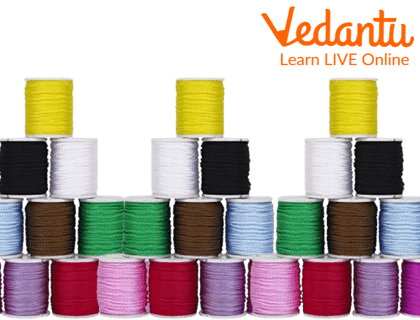




What are Thermoplastics?
Thermoplastics are polymers that convert into the liquid state when they are heated and thus can be remoulded at this elevated temperature and they solidify upon cooling. This cycle of heating up and cooling down the plastic can be repeated many times, thus it can be reshaped and remoulded many times very easily. There are a wide variety of thermoplastics and each of them has a variety of applications in different industrial sectors which we will discuss in this article.
Thermoplastics Examples
Some examples of thermoplastic are listed below:
Polythene
Nylon
Teflon
Acrylic
Polystyrene
PVC
Polypropene
Types of Thermoplastics and Their Uses
There are different types of thermoplastic polymers, some of which we will discuss in this section:
Polythene
The word polythene must be very familiar to you and the first thing which comes to mind when we hear the term polythene is the plastic polythenes that we use as carry-bags, but in reality, polythene is a family of several materials. The term Polythene comes from two terms, Poly meaning many and ethene, which simply means many repeating units of ethene. Polythene has several uses, one of the most important ones being plastic bags.
Teflon
The term Teflon actually means Polytetrafluoroethylene. It is a type of fluoropolymer and has various applications, such as making nonstick cookware, it is used as a lubricant in several industrial processes, and being highly non-reactive, it is also used to coat the instruments and lab materials that come in contact with chemicals.
Nylon
Nylon belongs to a subclass of polymers known as polyamides. It is mainly used as a substitute for natural silk and thus is most commonly used in the fabric industry.

Nylon
PVC
PVC is also a term that you may be familiar with, it actually stands for PolyVinylChloride. It is very famous and has a lot of applications because it is a tough yet lightweight material that is used in the manufacture of pipes, drainpipes, gutters, roof sheets, etc.

PVC
Acrylic
The chemical name of Acrylic is Poly methyl methacrylate, and it is a sturdy substitute for glass, thus it is usually used in glass making and other related industries.
Application of Thermoplastic
The uses of Thermoplastic will be discussed in this section:
Thermoplastic material is usually used to make most of the sports equipment.
Most toys are also made up of thermoplastic.
It is also used to make several automobile parts.
Additionally, it is also used to make CDs and DVDs.

CDs and DVDs
Different containers like shampoo bottles, drinking bottles, and food storage containers are all made up of thermoplastic.
Thermoplastic Resin Use
Thermoplastic resins are essential materials that soften on heating and harden on cooling down. Because of this property, they can be moulded into several shapes and structures which makes it applicable to various industries. Let's talk about some of the use of thermoplastic resins:
Some of them are used in the food and drug industries.
They can also be used in the glass making industries, for making window glasses and other types of glasses.
It can also be used in the medical field, as a replacement of defective or non-functional eye lens.
Some are also used in the clothing industry, mainly as a substitute for silk.
Some types are also used in the manufacturing of bulletproof vests and bulletproof glass.
Sample Questions
State whether the statements mentioned below are correctly stated or not.
Thermoplastics are a class of polymers.
Ans: True.
Nylon is a good substitute for natural cotton and thus is used in the clothing industry.
Ans: False, nylon is a substitute for silk and that is why it is used in the clothing industry.
Polythene is the most commonly known thermoplastic polymer.
Ans: True
Learning by Doing
Complete the statements given below by filling in the blanks.
PVC stands for ________.
Ans: PolyVinyl Chloride.
_________ is mainly used to manufacture drain pipes.
Ans: PVC
Thermoplastic ________ can be remoulded again and again.
Ans: resins.
_________ is an example of a fluoropolymer.
Ans: Teflon.
Summary
Thermoplastic is a subclass of polymers and the main quality of thermoplastic is their ability to be remodelled into different shapes and structures due to the effect of heat on them, they become soft on heating and harden back up when cools. There are several different types of thermoplastic polymers like polythene, PVC, nylon, polystyrene, polypropylene, etc. All of these have a variety of applications in a vast variety of industrial fields which we discussed in this article.
FAQs on Uses of Thermoplastic
1. Can thermoplastic be recycled?
Thermoplastic make upto 75% of the total plastics being used in the entire world and one of the major reasons leading to this is the fact that it is recyclable since it can be simply heated and converted into liquid followed by remoulding it into any new product. Thus, to conclude, yes, thermoplastic is recyclable.
2. Differentiate between thermoplastic and thermosetting plastic.
The major difference between thermoplastic and thermosetting plastic is the fact that thermoplastic material can be remoulded and is flexible whereas the thermosetting plastic, once set, can not be remoulded, thus the name. Some other difference is that thermosetting plastic is usually tougher and is of higher molecular weight as compared to thermoplastic.
3. In which industry, thermoplastics and polymers are mostly used?
Based on usage, automobiles top the charts in using thermoplastic materials, it is mainly used to manufacture a lot of parts for several vehicles. For polymers, it is mainly used in the commercial packaging and plastic industry.









